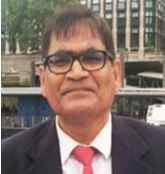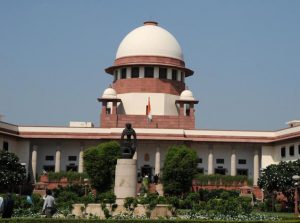 By Professor Satya Narayan Misra in Bhubaneswar, April 30, 2024: The Congress manifesto that if they come to power, they will usher “Prosperity for All and not wealth for a few” seems to have stirred the hornet’s nest in the BJP camp. Mr. Modi, in response, has made a bizarre and bigoted statement that the Congress would redistribute mangalsutras worn by Hindu women to Muslim infiltrators in the country.
By Professor Satya Narayan Misra in Bhubaneswar, April 30, 2024: The Congress manifesto that if they come to power, they will usher “Prosperity for All and not wealth for a few” seems to have stirred the hornet’s nest in the BJP camp. Mr. Modi, in response, has made a bizarre and bigoted statement that the Congress would redistribute mangalsutras worn by Hindu women to Muslim infiltrators in the country.
This is not surprising as Mr. Modi is perceived as the leader of the billionaires whom he has passed on Rs 16 lakh crore as tax exemption. As the fastest growing economy, India is also acquiring the reputation of being the most unequal country where 10% of India holds 70% of the national wealth. As against 9 billionaires in 2000, India has 119 of them today. As per the Oxfam report, 73% of wealth generated in 2017 went to the richest, while the bottom 50 & (670 million) saw an increase of 1%.
Distributive justice and shared prosperity have gone to the back burner while appeasing the super-rich with appropriate tax blandishment. Against this backdrop, a 9-judge bench of the Supreme Court hearing a petition made in 1992, challenging MHADA Act, has ignited curiosity and acquired salience. Right to property was introduced as a Fundamental right in our Constitution. It has witnessed several pitched battles between the Parliament and the Supreme Court, whenever the government has tried to acquire them for ‘public purpose’.
While in the Golaknath Case (1967), the Supreme Court considered right to property to be inviolable, in the Keshavananda Case (1973) , it was not considered a ‘basic structure’ , unlike federalism, secularism etc ; particularly by Justice HR Khanna. These spats were preceded by Nehru’s resolve to ring fence Zamindari Abolition Act by several states from judicial review by creating the Ninth Schedule in 1951. His daughter went one step further by adding 31C to the Constitution in 1971 through the 25th amendment as per which the state can distribute material resources of the country to sub serve common good (article 39(b). This will not be negated by right to equality which is a fundamental right.
 In essence an ideal of distributive justice will not be hamstrung by equality jurisprudence. This amendment was upheld by the Supreme Court in the Keshavanand case. Article 39(b) read with 31 C and 14 has led to several litigations, with another issue being debated: Does individual property constitute resources of the community for public take over and distribution. One such interesting case came up before the Supreme Court (State of Karnataka vs Ranganath Reddy 1978) when contract carriages were nationalized in the state in 1974.
In essence an ideal of distributive justice will not be hamstrung by equality jurisprudence. This amendment was upheld by the Supreme Court in the Keshavanand case. Article 39(b) read with 31 C and 14 has led to several litigations, with another issue being debated: Does individual property constitute resources of the community for public take over and distribution. One such interesting case came up before the Supreme Court (State of Karnataka vs Ranganath Reddy 1978) when contract carriages were nationalized in the state in 1974.
While four judges upheld the Act being for a public purpose, Justice Krishna Iyer went one step further by clarifying that ‘to exclude ownership of private resources from the coil of Article 39(b) is to cipherize its basic purpose of redistribution’. With a strong socialist conviction, Justice Iyer averred that socially conscious economists will find little difficulty in treating nationalization of transportation as ‘distributive progress for good of the community.’
The matter came up again when the Sanjeev Coke Manufacturing Company was nationalized. The Supreme Court in a unanimous verdict in 1983 clarified the contours of material resources to include all resources, natural and manmade, public and private owned. Justice Untwalia writing the judgment clarified that ‘not only resources owned by the community as a whole but it refers to the resources owned by individual members of the community’.
Giving a thumps up to directive principles of state policy, the court clarified that the broad egalitarian principle of social and economic justice for all is implicit in every directive. As a final punch the Court observed: When 31C comes Article 14 goes out. This was the firmest vindication of Indira’s tryst with distributive justice. The matter came up again when validity of Chapter VIII A of MHADA was introduced in 1986 which authorized the government to acquire property by paying a rate equivalent to 100 times the monthly rent.
When the matter came up before the Supreme Court in 2002, a two judge bench referred the case for a larger bench to consider the merit. That’s how 38 years after an act was passed for acquiring private property it is getting heard in the Supreme Court now on the substantive question if private property is part of the resources of the community, which Article 39(b) has referred to.
While in the Sanjiv Coking Coal nationalization case, the Supreme Court has unequivocally clarified that individual property is  part of resources of the community, the conflicts in the contours are far from over. CJI DY Chandrachud in his observations has brought to the table the salience of Gandhi’s theory of trusteeship which neither considers private property sacrosanct as the capitalists look at it nor part of states’ common resources as the socialist perceive property to be. In Gandhi’s lexicon of trusteeship theory, wealthy people would be trustees of the trust that will look after the welfare of the people in general. The rich can be persuaded to part with their wealth to help the poor. Acharya Vonobha Bhabe started the Bhoodan movement in 1951 to implement Gandhi’s trusteeship theory.
part of resources of the community, the conflicts in the contours are far from over. CJI DY Chandrachud in his observations has brought to the table the salience of Gandhi’s theory of trusteeship which neither considers private property sacrosanct as the capitalists look at it nor part of states’ common resources as the socialist perceive property to be. In Gandhi’s lexicon of trusteeship theory, wealthy people would be trustees of the trust that will look after the welfare of the people in general. The rich can be persuaded to part with their wealth to help the poor. Acharya Vonobha Bhabe started the Bhoodan movement in 1951 to implement Gandhi’s trusteeship theory.
However by the 60s, the movement lost its momentum. On the other hand, EMS Namboodripad as CM of Kerala brought in agrarian reforms bill in 1958 to confer ownership rights to cultivators and agricultural labourers. These reforms brought radical changes in the state, unlike most other states, where they were met with legal litigation and resistance from vested interests. While free market philosophy will bring in greater overall economic prosperity, it is only through resolute political will of ensuring distributive justice, the bottom 50% will be part of Viksit Bharat. BJP’s divisive politics must not roil the constitutional mandate of promoting socio economic justice for all.



Leave a Reply
Be the First to Comment!